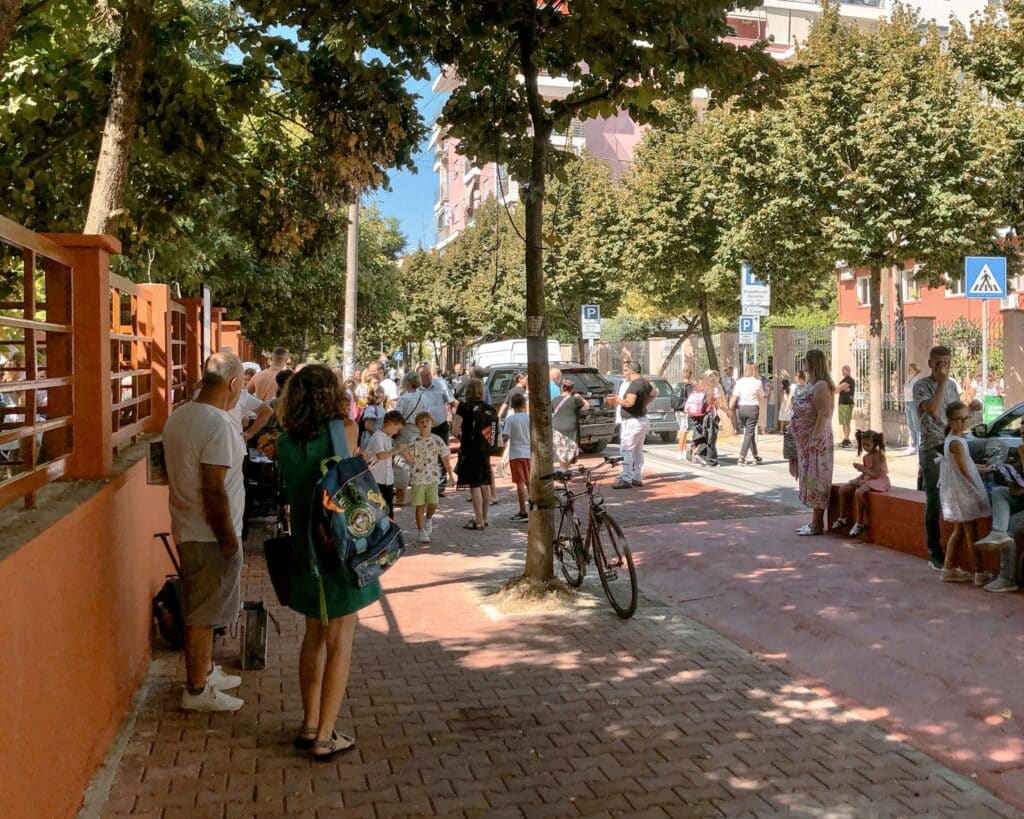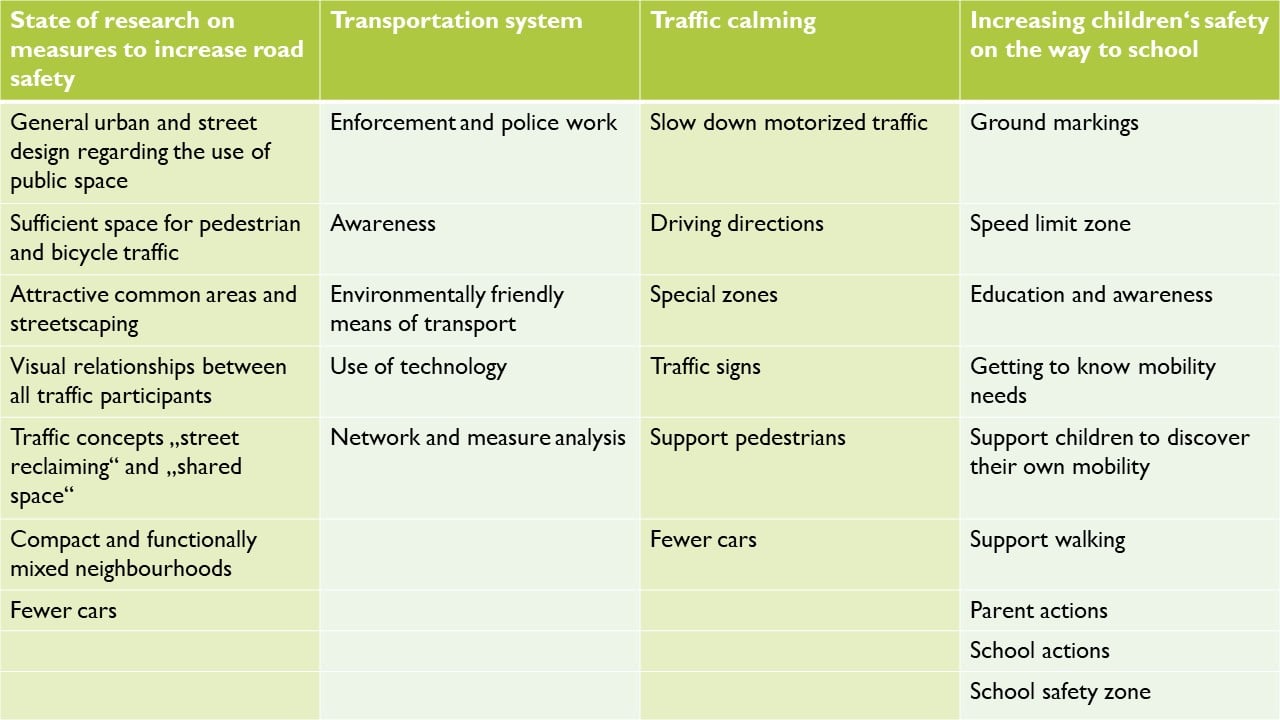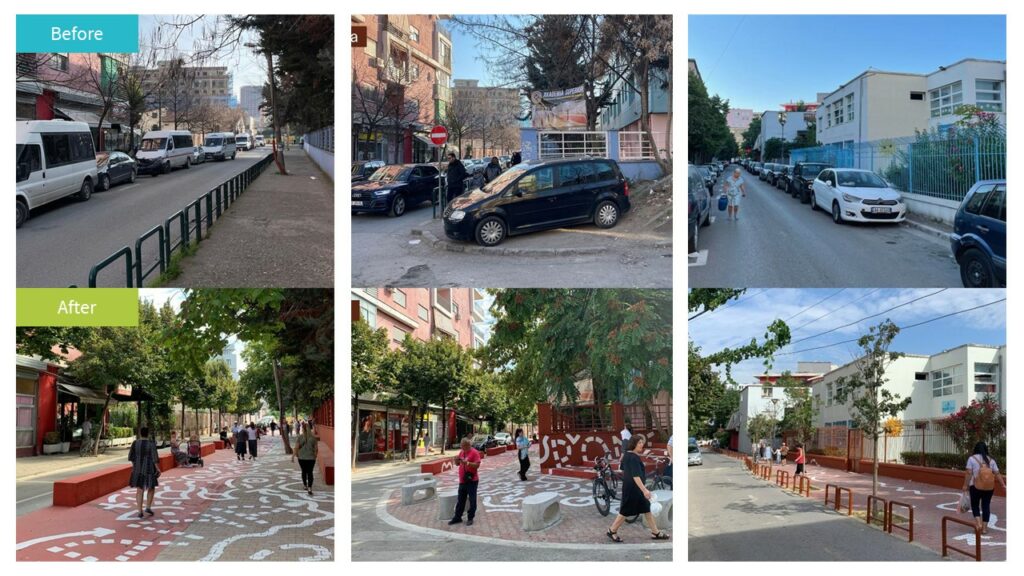

Every year, 1.35 million people die in entirely preventable traffic accidents, with children and young adults most affected, making road traffic injuries the leading cause of death for those aged 5 to 29 (World Health Organization 2018). In response, the World Health Organization (WHO) initiated the Decade of Action for Road Safety 2021-2030, aiming to reduce road traffic fatalities and injuries by at least 50% from 2021 to 2030 (UN General Assembly 2020). To attain this goal, WHO, alongside UN regional commissions and partners in the UN Road Safety Cooperation, has devised a comprehensive global plan emphasizing a holistic approach to road safety, improved road and vehicle design, stronger laws and enforcement, and timely emergency care (World Health Organization 2021). Additionally, the plan encourages the promotion of walking, cycling, and public transportation as healthier and more environmentally sustainable modes of transport (Figure 1).
Implementing the Global Plan’s holistic approach requires special attention to ensuring a just transition in the transport sector, with a focus on equitable access, as identified by TUMI (2022). Children’s right to safe mobility and secure routes to school should be prioritized, recognizing them as equal users of public spaces and transportation. Achieving a just transition in the transport sector, especially concerning children’s safety on the way to school, involves addressing challenges related to transforming urban areas, streets, public transport, and promoting gender and social equity. The interconnectedness of Just Mobility and road safety for children necessitates a blend of infrastructure enhancements, education, policy adjustments, and community engagement.
Tool to analyse children’s road safety
Star Rating for Schools (SR4S) is the first evidence-based tool for measuring, managing, and communicating the risk children are exposed to on a journey to school. It supports quick interventions that save lives and prevent serious injuries from day one. SR4S allows an easy assessment of each of these features and using evidence-based research of their impact on safety, a star rating can be calculated at spot locations, where 1-star is the least safe and 5-star is the safest. (Baumann et al. 2021)
Road safety measures for children can be categorized into four main groups (Figure 2):
Common measures, as indicated in existing literature, involve reducing speed for individual motorized traffic and utilizing ground markings. These measures are typically implemented in proximity to schools and are most effective when integrated with other safety measures, such as signage, traffic signals, and physical barriers, to establish a comprehensive road safety environment. Additionally, promoting awareness among all road users and imparting traffic education to children are crucial.

Within the framework of the “Streets for Kids” program, an entire city block encompassing two primary schools, a kindergarten, and a crèche underwent a redesign in partnership with Qendra Marrëdhënie, the Municipality of Tirana, and GIZ Albania. The primary issue addressed by this initiative was the need to create safer and more enjoyable environments for schoolchildren and the local community around educational institutions.
The programm is dedicated to transforming spaces surrounding schools into secure and pleasant areas for students and the neighbourhood. This approach is exemplified by the successful transformation of the street in front of Edith Durham middle school into a permanent school street, demonstrating the program’s potential.
As a result of this initiative, a comprehensive redesign of an entire city block has taken place, benefiting approximately 1600 children who spend a significant part of their day in these educational institutions. The block now features:

Building upon the success of Edith Durham middle school’s transformation, the Municipality of Tirana is committed to expanding the “Streets for Kids” program. By the end of 2023, they plan to create 12 more school streets. Completing school streets for all educational institutions covered by the program is crucial to sustaining this positive momentum and further enhancing safety and well-being for all Tirana’s children.
In addition to the case study shown above, which is being implemented as part of the Sustainable Urban Transport in Tirana (SUTi) project, there are already a number of GIZ projects on the topic of school route safety that have been successfully completed:
In conclusion, prioritising safer routes to school is pivotal in reducing preventable traffic accidents, especially among children and young adults. The World Health Organization’s Decade of Action for Road Safety underscores the need for a comprehensive approach that embraces sustainable and healthier transportation modes. Safer routes encompass infrastructure enhancements, education, policy adjustments, and community involvement, as exemplified by initiatives like “Streets for Kids” in Tirana, Albania. By creating environments that encourage walking and cycling, we not only enhance safety but also foster more sustainable modes of transportation. These efforts reflect a positive change towards a more sustainable future, one where cleaner, greener, and safer transportation options are not just a possibility but a reality. Such endeavors remind us that by investing in our children’s safety, we also invest in the well-being of our planet and future generations.
 Parents pick up their children after school, School Street Block in Tirana, Albania © GIZ
Parents pick up their children after school, School Street Block in Tirana, Albania © GIZ

Anna Eikenberg
Ariela Hajdarmataj
ariela.hajdarmataj@giz.de